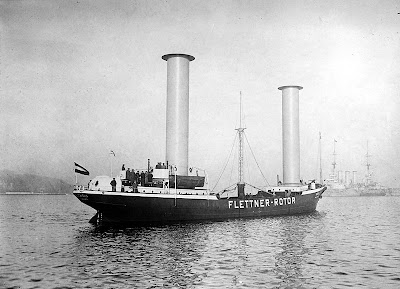Sweden has for centuries been one Europe´s most important iron ore exporters. Recently, PM Fredrik Reinfeldt has indicated that , due to the historically high price level, exports of iron ore could be Sweden´s answer to Norway´s oil exports.
There are plans to re-open the Grängesberg iron ore mine in Bergslagen in Central Sweden, where mining activity had continued since the 15th century until closure in 1990.
A successful re-opening of mining activities will have to be accompanied by improved infrastructure for port facilities, and perhaps the development of more effective ore carriers.
A look at what happened about a hundred years ago might be of interest:
The first two decades of the 20th century were a very profitable time for iron ore exports from Grängesberg, when new types of specialized vessels for transportation of ore were introduced.
The Dutch owned ore cargo steamer, shown below, was built by William Doxford & Sons in Sunderland in 1903. The 6799 tonnes "Grängesberg" was a so called turret deck ship, with an unusual hull, which made it particularly suited to the carriage of ores.
 |
| The Dutch owned steamer "Grängesberg" was mainly used for transporting iron ore from Sweden to Rotterdam. |
 |
| The "Blötberg" was another Dutch owned turret steam used on the Oxelösund - Rotterdam route in the early 20th century. |
 |
In side profile, turret deck ships resembled other merchant vessels with flush decks or with small forecastles and poop decks.[6] In cross-section the differences between turret deck vessels and more conventional ships are apparent. There was no gunwale; the vertical side of a turret ship curves inward above the load line to a horizontal plane. This flat area was known as the harbour deck (Hamndäck in the picture).
(source: wikipedia) |
However, in the early 1920s the turret deck steamers had already lost their popularity in the ore shipping trade. This was probably mainly due to the capsizing of the turret steamer "Oxelösund" in 1916. Particularly, when loaded with other cargo than ore, the turret ships were considered to have stability problems.
The "Sir Ernest Cassel" - named after the the British merchant banker and grandfather of Edwina Mountbatten, who owned Grängesberg mine at the turn of the century - was another type of ore steamer popular in the first decades of the 20th century.
 |
| The "Sir Ernest Cassel", designed by the Swedish ship designer J. Johnson, and built by Messrs R. & W. Hawthorn, Leslie & Co. in Hebburn on Tyne, was equipped with 12 electric cranes. |
 |
| The cranes were used for speedy loading of the ore. |
 |
| The loading system seen from another angle. |
However, in the early 1920's also this type of ore freighters lost their popularity. They were considered to be excellent for transporting ore, but less less so for carrying other, less heavy cargo. In 1920 the Grängesberg mining company had placed orders for 18 new ore carriers, but none of them was of the "Sir Earnest Cassel" type.
The end of the once so proud ore carrier was sad. On April 16, 1940 the German armed merchant cruiser Thor intercepted the "Sir Earnest Cassel", which then was sunk by demolition charges. The crew was taken aboard the German ship.


































.jpg)